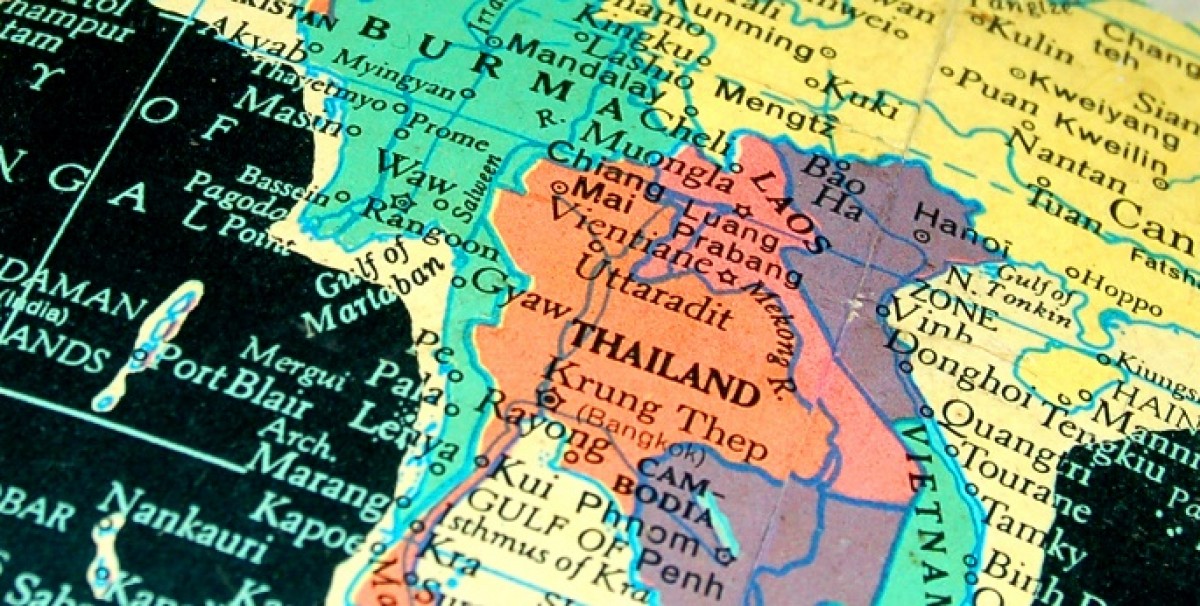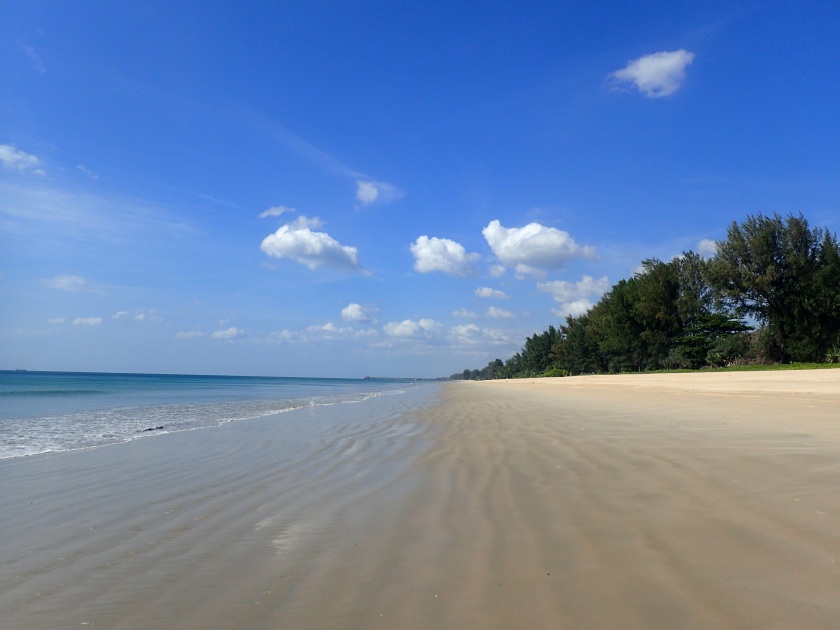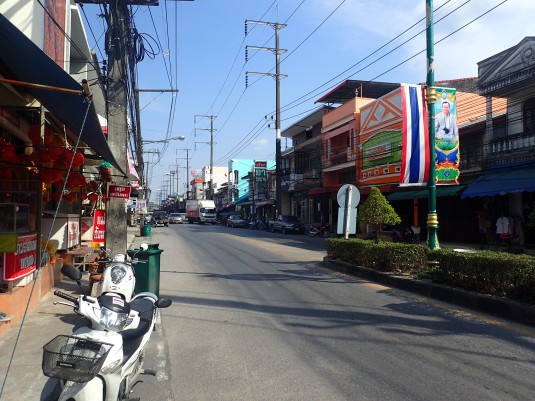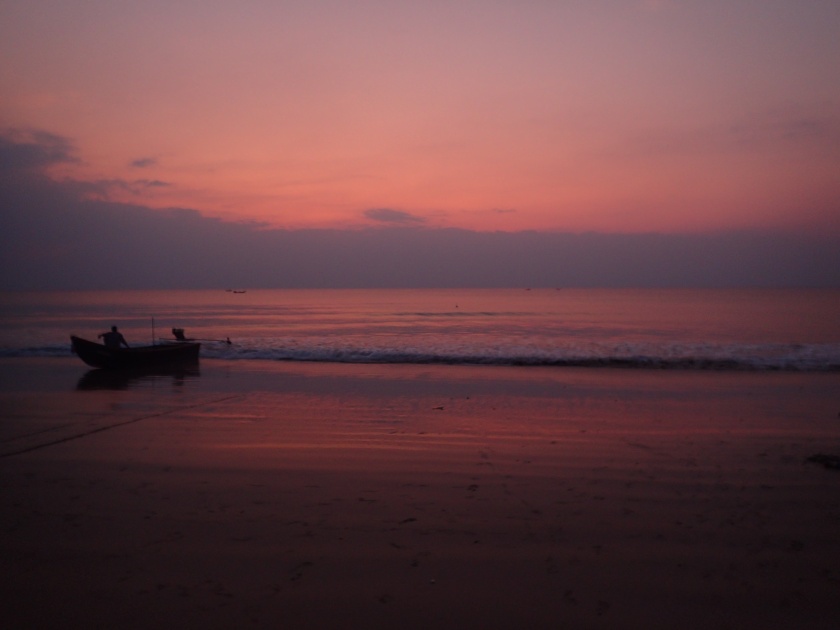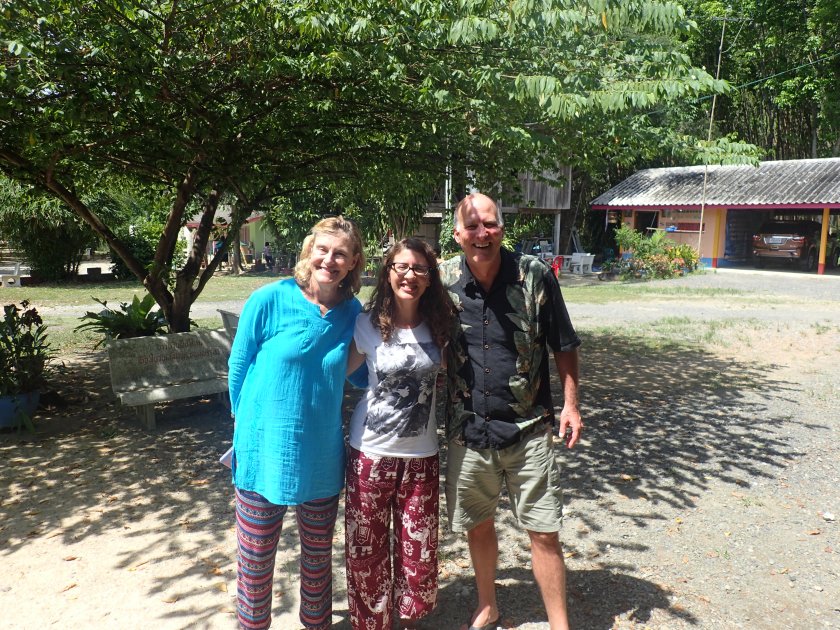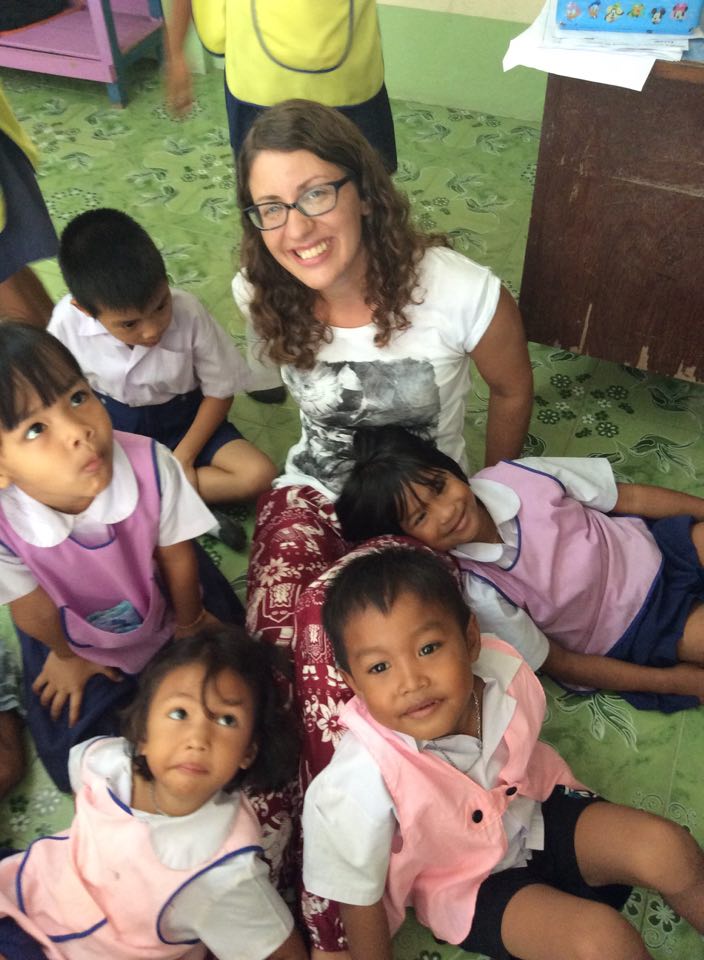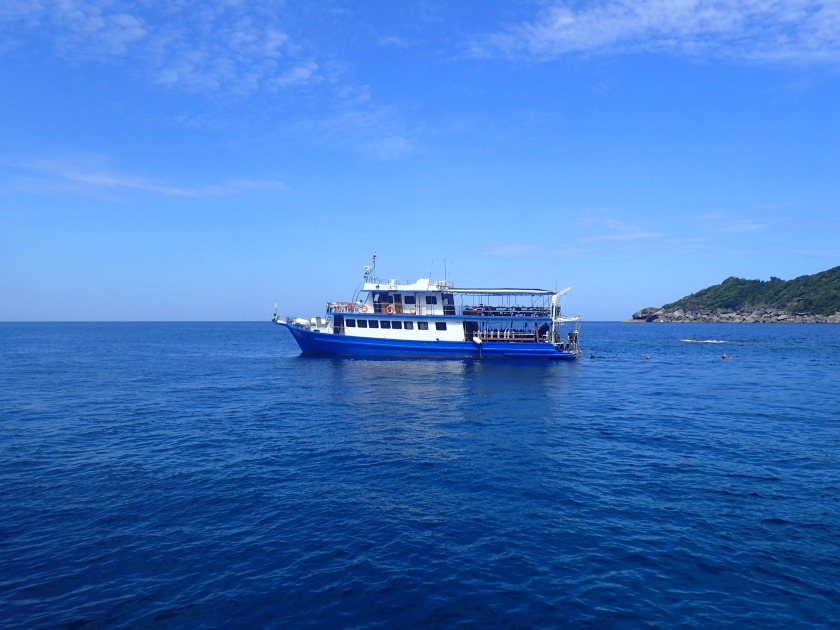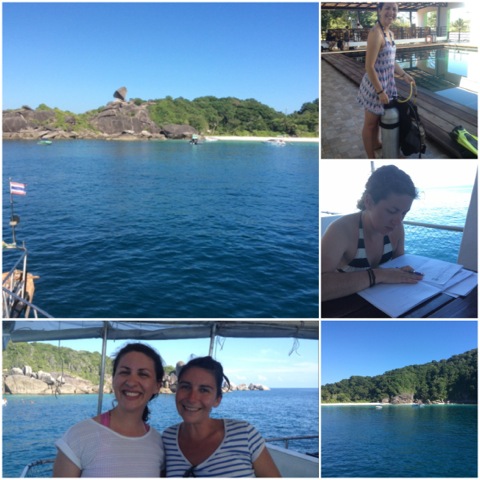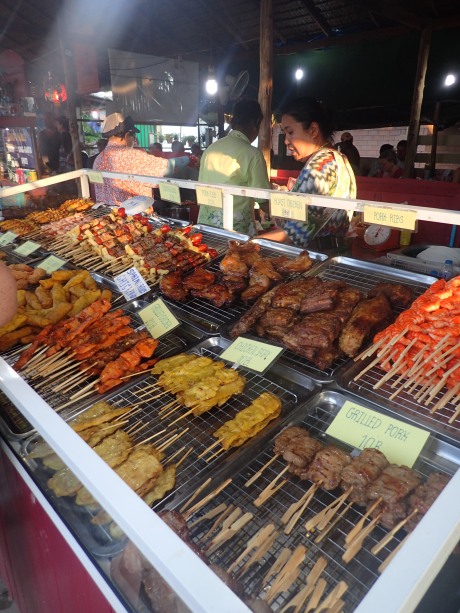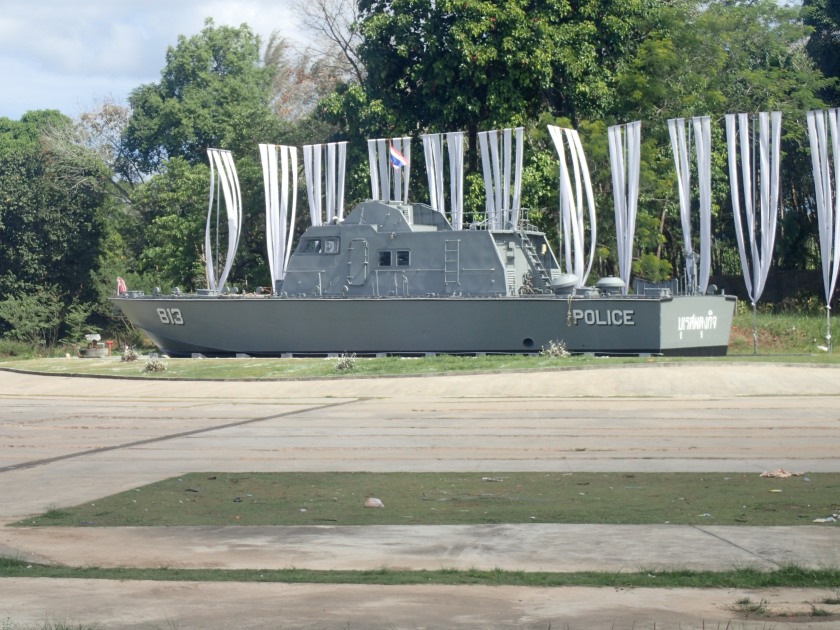I felt quite emotional leaving Khok Kloi at the end of my second week’s teaching. Not only had the afternoons been relaxing and luxurious, with excellent food, beautiful surroundings and great company, but I had also thoroughly enjoyed teaching at Wat Sri. I felt very privileged to have gained an insight into Thai daily life from people with a point of view completely removed from the tourism industry.
During my time in Thailand so far I had become quite used to being in small towns, relaxed and easy to navigate, and as I waited for the bus to Phuket I tried to mentally prepare myself for a completely different kind of experience. After the end of teaching I had been dropped off on the side of the highway on the edge of town and instructed to wave my hand up and down when I saw a bus coming. As I waited, with no idea how long I’d have to wait, I idly considered that it might not be such a terrible thing to have to stay a few more days, but the bus turned up in a few minutes and I was on my way.
I had three days until I needed to be in Kuala Lumpur and would have happily bypassed Phuket, having heard one too many stories of sleaze and tacky decadence, but my friend Jamie was there so I decided to put my preconceptions to the test and headed to Patong Beach, Phuket’s main party town.
As it turned out, it wasn’t as seedy and crass as I had feared, and I developed a kind of love hate relationship with the town. Although it only has around 20,000 inhabitants, it felt (and smelt) like a city, which I found quite overwhelming after the previous three weeks, and it certainly lacked the charm of Khao Lak. A main road runs along the seafront, almost drowning out the sound of the waves, and the beach was packed, with sun loungers and people selling food and gifts on the sand, and parasailers, jet skis and boats in the water. It is essentially pretty much what I was expecting from a Thai resort town before I came to Thailand, and before I was spoilt by Khao Lak and Natai beaches. It’s not a relaxing, ‘wander along the shore contemplating life’ place to be, but you can order food and drinks without leaving your sun lounger. Although it feels a little removed from Thai culture, but on the other hand there was plenty to see wandering around, including a nice market and some nice shops, and the Thai people I met just as friendly and cheerful as everyone else I’d met. I found it perfectly easy to avoid the seedy party street of Bangla Road, and never felt uncomfortable walking around, although, as Jamie pointed out, he had a very different experience walking around with me compared to being alone or with a group of men.
I had a free day to myself while Jamie was busy on his course, and as I felt like I’d done enough beach relaxing for the time being, I took a day trip to the Phi Phi Islands, famous for inspiring the Alex Garland novel The Beach and generally being beautiful. And the islands were stunning; dramatic limestone cliffs rising out of the sea, colourful caves and dribbly stalactites, and the snorkeling was good too. The only problem I had was the tour itself, although I probably should have known better. It was a day trip designed for people who wanted to say that they had ‘done’ the Phi Phi Islands; the speedboat takes the thirty or so punters from beach to beach, where you have a few minutes to take some pictures before you’re herded back on the boat. Apart from snorkeling, which less than half of the group took part in, there were no activities, and no information about the islands’ history or geography or anything was offered. It’s not that I dislike doing ‘tourist’ stuff – I was perfectly happy with a tour group in Myanmar – it’s just that I don’t understand the point of a tour that doesn’t offer either some kind of physical activity or the chance to learn something.
During the tour, as well as walking around Patong, I was struck by the demographic or the tourists. I had expected to see lots of Australians, Europeans, and maybe some Americans, but I was surprised to hear that the biggest tourist nationality was now Chinese, followed by Russians. This was evidenced in the shops and restaurants, where signs were almost always translated into these languages as well as English, and in the markets where the traders spoke all three languages.
On my final evening in Thailand I got a local minibus shuttle to Phuket Bus Station, and from there an overnight bus to Hat Yai. It was a ‘VIP’ bus, meaning the seats where huge with lots of space to recline, and I slept very well until I arrived in Hat Yai at 5am. From there I took a truly terrifying motorbike taxi to the pickup point for my bus to Kuala Lumpur, and got to the Malaysian border around 11am. Part of me had expected to find Thailand a little jaded, cynical maybe, after so much intense tourism development over the last 25 years, but I found the friendly and good-humoured people, gorgeous landscapes, and the best food I’ve ever had. From fancy pants restaurants to street stalls, I didn’t have a single bad meal in Thailand, and I didn’t even think I liked Thai food that much.
